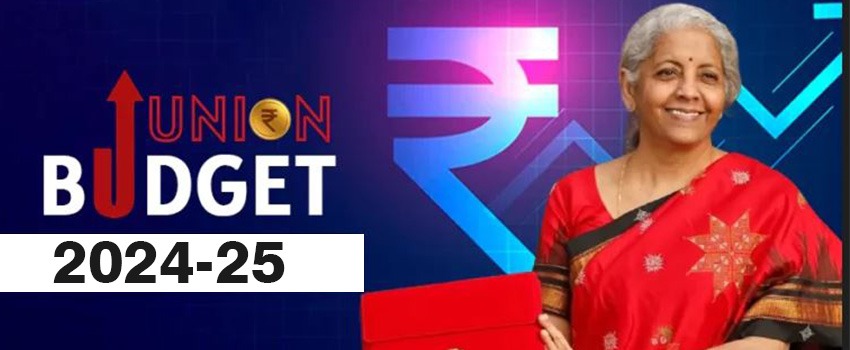Yes! It’s our 23rd RBI Governor, Mr. Raghuram Rajan, who took charge to face the GRIND that the current state of economy has to offer.
GDP growth, at an all-time low….Rising Inflation….& a Depreciating Rupee……..
So, what are the country’s expectations from our new Governor and what initiatives are being taken in his regime to boost growth, control inflation, and strengthen the rupee?
Let’s take a look…..
Rajan faces the GRIND
Raghuram G. Rajan, an IIT-Delhi & IIM-Ahmedabad graduate, a PhD from Massachusetts Institute of Technology, a former International Monetary Fund Chief Economist, famed for his perceptive warnings about the global financial crisis of 2008, took over as the 23rd Governor of Reserve Bank of India on September 5th this year.
He took charge at a time when he was immediately expected to face the GRIND that the economy is into – GDP growth, at an all-time low….Rising Inflation….& a Depreciating Rupee……..
According to Rajan, though the main mandate of the central bank is to maintain stability and to sustain confidence in the value of the rupee, there are two other important mandates too — inclusive growth & development and financial stability. Attempts of the past focussed primarily on containing inflation, thus, contributed significantly to the slowdown in the economy. On the contrary, Rajan has a clear focus on the long-term.
Let’s take a quick look at the initiatives that are being taken in his regime….
Growth
India’s growth slipped to a decade’s low of 5% in 2012-13.
As per Rajan, part of the reason for the current mess that the country is in, was that India did three rounds of stimulus, cut interest rates sharply and ignored Consumer Price Index. He suggests including CPI as the index for measuring inflation, over the more stable WPI. Rajan has cited problems in allocation of natural resources and spectrum as responsible for the slowdown in the growth story.
He is also aware of the challenges that await him from the banking sector, where non-performing assets and debt restructuring cases are on the rise. He proposes strengthening the financial infrastructure of the country, improving the corporate bond market and the vibrancy of the equity market. For Rajan, inclusion is the key. With a large portion of the system either unbanked or in the grey market, the impact of the RBI is limited. Hence, the need is to reach them through bank branches and multiply the rupee. His long-term strategy includes allowing foreign banks to operate via wholly-owned subsidiaries in India.
However, he believes that 7-8% growth was feasible in the short run if clarity was brought about on issues, such as allocation of resources. And, if India was to reach the 12%-growth mark, which he believed was possible in the long run, the Government would have to undertake scrupulous reform measures in areas such as infrastructure, human capital, regulation and finance.
Inflation
To contain the inflation, Rajan chose to hike the repo rate (the short-term lending rate at which, the RBI lends money to banks) by 0.5% (25bps hike each time). Simultaneously, he also reduced the MSF (Marginal Standing Facility, which is a short-term overnight borrowing facility for banks) by 50bps. Hence, the average cost of funds for banks did not change much. In fact, all that Rajan attempted to do was to stabilise the monetary policy conditions, wherein the differential between the MSF rate and repo rate was brought back to normal levels of 100 basis points, which earlier stood at 150 bps. While the actions taken together have resulted in a marginal impact on cost of funds of banks, this step marks the normalization of monetary policy and a drawback of steps taken to support currency. This also means that Raghuram Rajan led RBI believes that Repo rate would be its primary tool to set interest rates and fight inflation expectations.
The thing to note of significance over here is that unlike most Central Bankers of the world, Raghuram Rajan has held a much more conservative view. One gets an impression that he strongly believes that fighting inflation and supporting growth are not paradoxical goals for the Central Bank in the long term. He believes that a low inflation rate is the key to ensure a sustainable growth rate over long term. As a result, managing inflation is the only job of Central Banks monetary policy. In that sense it’s crucial that in a marked shift from its predecessors, Rajan led RBI has shifted back to managing CPI inflation level from WPI inflation.
Rupee Depreciation
On assuming charge, Rajan had announced many steps, including managing the NDF market.
The NDF (non-deliverable forwards) or offshore market remains outside the regulatory purview of the RBI but it controls the onshore market to a considerable extent. This market, characterised by aggressive shorting (i.e. the sale of a borrowed currency with hope that its value will fall in the future, when one would buy it for less and make a profit), had been influencing the rupee to a great extent. A crackdown on such speculative trading in the NDF market has brought about some stability to the situation.
He followed up this with opening the swap window for NRI’s that allowed Banks to attract foreign currency deposits through FCNRB (Foreign Currency Non Resident Bank) accounts, which gives 400bps over Libor. The currencies targeted under this scheme are USD, EURO, GBP, CAD, JPY, AUD, CHF, DKK, NZD and SEK. To put in a perspective, a FCNRB account in AUD yields close to 7% (with BoB) for a 5 year deposit compared to, say, 4.30% (with Bankwest) for a 5 year deposit. (Please note that this scheme window closes on 30th November, 2013, at the same time when RBI swap window closes for the banks.)
Both these aspects have helped in significantly supporting the currency. While the crackdown on NDF market has controlled speculative activity on INR, on the other hand the swap window has resulted in higher remittances inflow from the NRIs.
His long-term strategy includes working with Government to help in rupee internationalisation. Internationalisation of rupee has some quite direct benefits. Take for example, the recent negotiations between India and Iran, in which India seeks to buy crude (and possibly Natural gas in future date) from Iran in rupee terms. If Iran was to accept this framework in principle, it would remove substantial pressure from the Indian Economy to meet its import commitments in dollar terms. Second, it should also help in more bilateral trade and exports from India to Iran. It’s surprising that India, as a policy, did not pursue such bilateral trade so vigorously, given the fact that India enjoyed such a relationship with erstwhile USSR through rupee-rouble trades.
However one needs to keep in mind that while RBI is the primary proponent of rupee internationalisation; this remains a long term strategic move and more a Government of India policy domain than RBI.
Fighting Gold lust of Indian’s?
Over last few years, one of the primary arguments of the policy leaders towards India’s consistently high level of CAD has been India’s affliction toward gold. While we do not accept this as a primary reason for unsustainable CAD levels as we believe that India’s inability to ramp up export, in spite of rupee depreciation and Indian policy, lust with continued support for subsidised energy even when evidences are mounting that such a policy is damaging long term prospect of India; we do believe that weaning Indians away from investment in to assets like gold to other productive assets has huge multiplier effect on the economy.
One of the primary reasons that Indians invest in gold is because gold has been considered as a safe inflation bet for long and given the highly volatile inflation levels witnessed by the Indian economy over past few decades, few can argue that managing inflation remains the primary driver for Retail Investment. This effect has been further been exacerbated as a result of Indian economies propensity to heat up as quickly as economy gathers growth momentum.
To fight this weakness of Indian investor by addressing their concerns to manage their investments that fight inflation consistently, Rajan also announced the issue of inflation-indexed savings certificates linked to the Consumer Price Index (CPI) to retail investors. This will protect investments by giving returns somewhat higher than the prevailing inflation rate.
So, will Rajan succeed in facing the GRIND?
Rajan has a big role to play in re-shaping the Indian economy, but it will take time.
In the short-term, raising interest rates does help prop up the rupee and control inflation, but also reduces the growth rate of GDP. Rajan has a tough task of balancing growth and inflation. Rajan asserts that the period ahead is likely to be challenging and thoughtful consideration of available alternatives is needed. Surviving the short-term without too much damage is essential to realise the long-term potential that the country has.
Will the RBI, along with its new Governor, succeed in closely monitoring inflation risk while being mindful of the evolving growth dynamics? We will have to wait and watch!
If you liked what you read and would like to put it in to practice Register at MoneyWorks4me.com. You will get amazing FREE features that will enable you to invest in Stocks and Mutual Funds the right way.
Need help on Investing? And more….Puchho Befikar
Kyunki yeh paise ka mamala hai
Start Chat | Request a Callback | Call 020 6725 8333 | WhatsApp 8055769463









